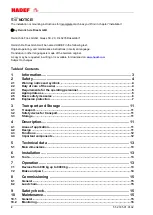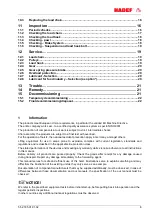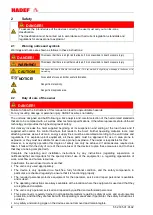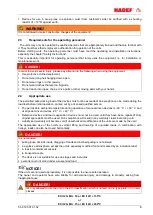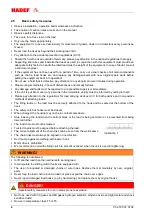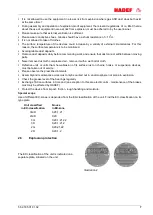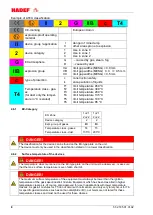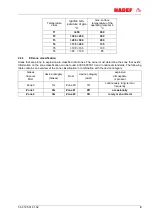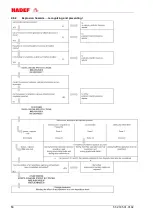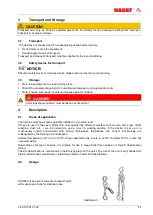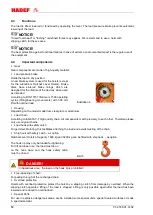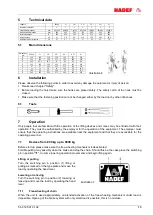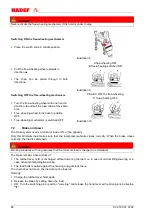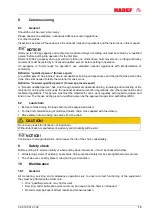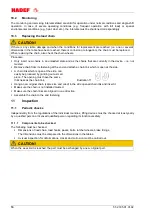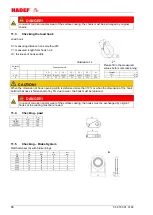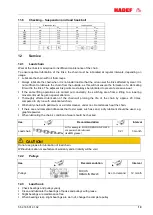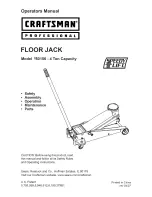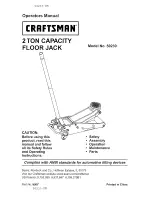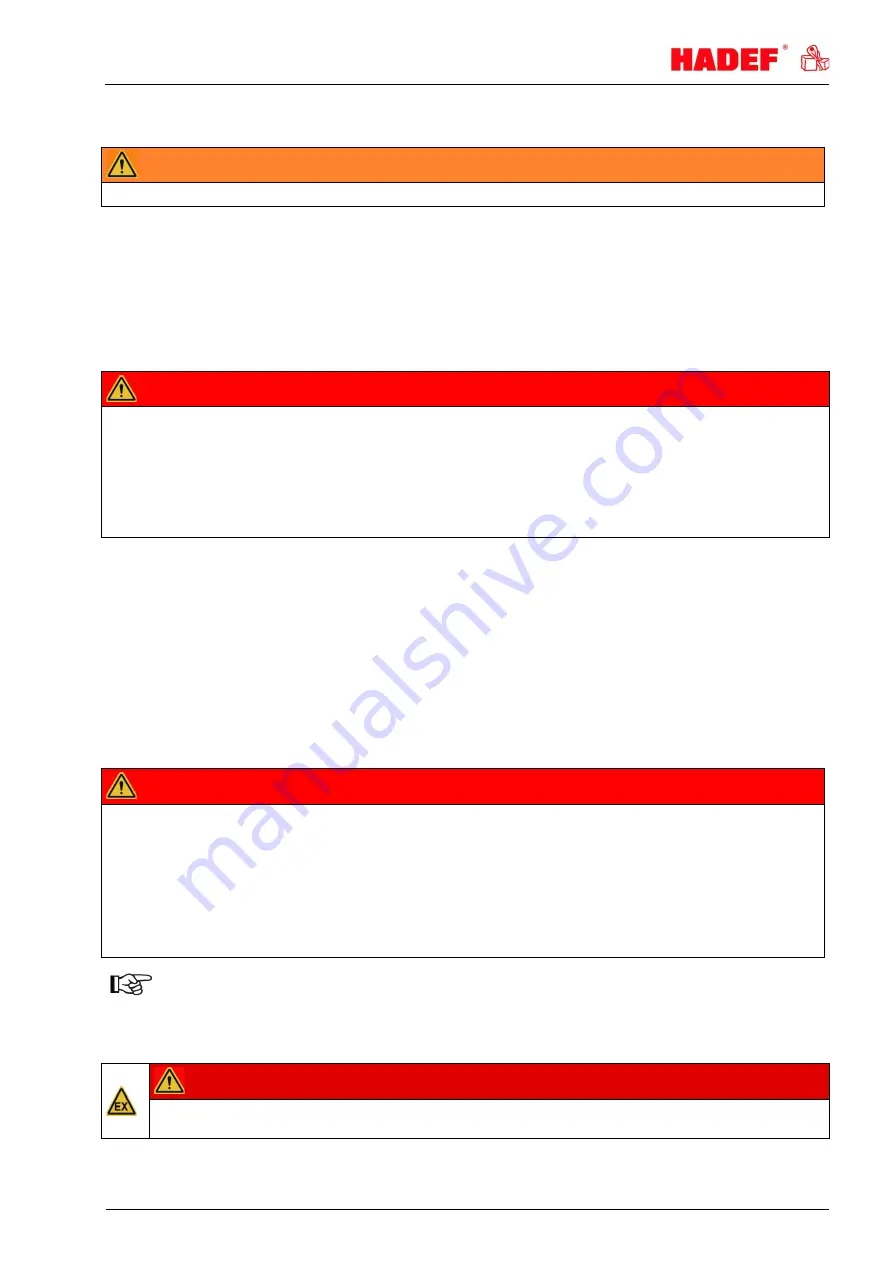
5.52.185.01.01.02
5
Devices for use in area prone to explosion must (from customer's side) be earthed with a shunting
resistor of < 10
6
Ω against earth.
WARNING!
It is not allowed to make constructive changes of the equipment!
2.3
Requirements for the operating personnel
The units may only be operated by qualified persons that are appropriately trained and that are familiar with
it. They must have their employer’s authorization for operation of the units.
Before starting work, the operating personnel must have read the operating and installation instructions,
especially the chapter "Safety Instructions".
This is especially important for operating personnel that rarely uses the equipment, i.e. for installation or
maintenance work.
DANGER!
In order to avoid severe injury, please pay attention to the following when using the equipment:
Use protective clothes/equipment.
Do not wear long hair hanging down open.
Do not wear rings or other jewelry.
Do not wear clothes that are too big/wide.
Do not reach into ropes, chains, drive parts or other moving parts with your hands
2.4
Appropriate use
The permitted safe working load of the devices must not be exceeded! An exception can be made during the
load test before initial operation, carried out by a licensed qualified person.
The permissible ambient temperature during operation of manual driven devices is -20 ° C / + 50 ° C and
at all power driven devices -20 ° C / + 40 ° C!
Defective devices and load suspension devices must not be used until they have been repaired! Only
original spare parts must be used. Non-compliance will result in any warranty claims becoming void.
Liability and warranty will become void if unauthorized modifications of the units are made by the user!
The appropriate use of the hoists is vertical lifting and lowering of unguided loads. In combination with
trolleys, loads can also be moved horizontally.
DANGER!
It is not allowed:
pulling loose of stuck loads, dragging of loads and inclined pulling is not allowed.
in explosive atmosphere, except the unit is especially modified for it and marked by an indication label
In reactor containment vessels.
to transport people
The device is not suitable for use on stages and in studios
persons must not stand under a suspended load
NOTICE!
If the units are not used appropriately, it is not possible to ensure safe operation.
The owner and operator have sole liability for all personal injury and damage to property arising from
inappropriate use.
DANGER!
It’s only allowed to use the unit in the EX-classification which is named on the type plate; or in lower
classes
EX II 2G IIB c T4 or EX II 2D c 135°C
or
EX II 2G IIB c T3 or EX II 2D c 200°C


